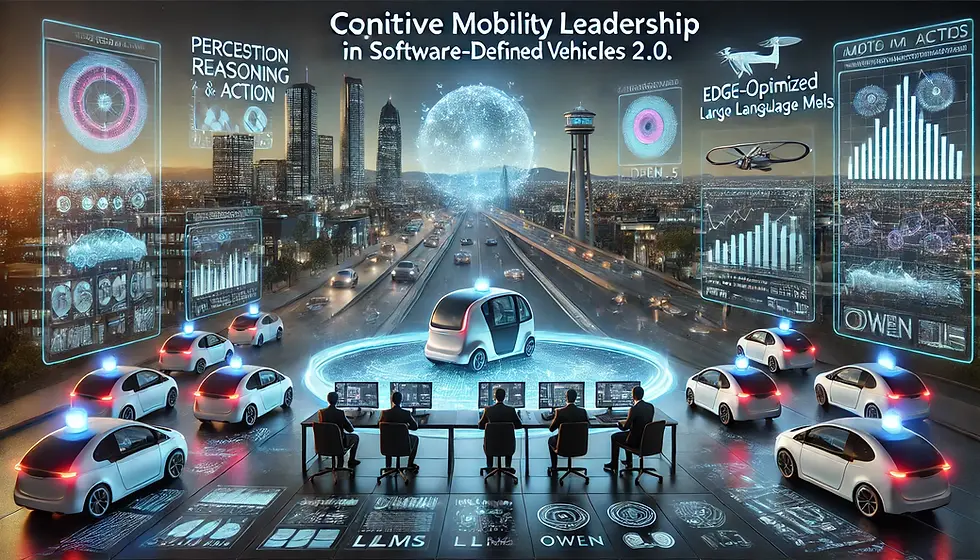How to Build a Profitable AI Business in 2025: A Strategic Playbook
- Mahbubul Alam

- Nov 24, 2024
- 4 min read

November 24, 2024
The AI industry is evolving rapidly, with opportunities to solve real-world problems and unlock new markets at an unprecedented pace. But turning AI potential into profit isn’t just about having the right technology; it’s about making the right business moves. Drawing from real-world experience, here’s a strategic playbook for building a profitable and sustainable AI business in 2025.
1. Craft a Results-Oriented AI Strategy
A solid strategy is more than aligning AI with business goals—it’s about driving measurable outcomes. Begin with frameworks like OKRs (Objectives and Key Results) tailored for AI adoption. Use these to define success metrics, such as reducing operational costs by a specific percentage or increasing customer retention through AI-powered personalization.
Example: A logistics company implemented AI to predict delivery delays, aligning the initiative with the goal of reducing customer complaints by 15%. By combining predictive analytics with actionable insights, they achieved a 20% drop in complaints within six months.
2. Deliver Solutions, Not Just Technology
Businesses increasingly seek plug-and-play AI solutions rather than custom-built systems. Identify industry-specific pain points and tailor solutions with immediate applicability.
Example: In healthcare, an AI startup focused on radiology developed a tool for faster MRI scan analysis, reducing diagnosis time by 50%. By addressing a critical bottleneck, they gained adoption in hospitals worldwide.
3. Leverage Responsible AI for a Competitive Edge
Trust is the foundation of any AI-driven business. Implement practical responsible AI frameworks that focus on transparency, fairness, and privacy. Beyond compliance, use tools like open-source fairness libraries and automated auditing platforms.
Example: A fintech company built an AI-powered credit scoring model but added explainability features to show why certain decisions were made. This transparency improved user trust, leading to a 25% increase in loan applications.
4. Bridge the Skills Gap with Smart Talent Strategies
While upskilling your workforce is essential, immediate results often require agility. Leverage AI-as-a-Service platforms, gig talent, or partnerships with expert firms to fill skill gaps quickly.
Example: A retail chain outsourced its initial AI-powered recommendation system development to a specialized agency. Once the system proved successful, they brought the team in-house for further enhancements.
5. Monetize with Strategic Revenue Models
Revenue generation is the cornerstone of a profitable AI business. Consider diverse models:
Subscription-based models for scalable AI products.
Pay-per-use models for flexible services like cloud-based AI tools.
Upselling opportunities by integrating AI solutions into existing IT ecosystems.
Example: An HR software company added an AI-driven employee sentiment analysis feature, offered as a premium add-on. This feature alone generated 30% of their new revenue.
6. Optimize and Scale Data Infrastructure
Quality data is the lifeblood of AI, but so is scalability. Invest in robust data governance and scalable platforms while addressing compute costs through cloud cost-optimization strategies or federated learning approaches.
Example: A ride-sharing app implemented an edge AI model for real-time demand prediction, reducing cloud data processing costs by 40% and improving response times for users.
7. Focus on Short-Term Wins with Long-Term Vision
Businesses demand quick returns, but AI is a long game. Use Lean AI development to prioritize pilot projects that deliver measurable short-term value, such as customer churn prediction.
Example: A telecom provider rolled out an AI-powered chatbot to handle basic customer queries, reducing call center costs by 25% in the first year. This success funded their larger initiative of building an AI-driven network optimization tool.
8. Collaborate Through Strategic Partnerships
AI ecosystems thrive on collaboration, but partnerships must be strategic. Align with technology providers, research institutions, and industry peers that complement your core competencies.
Example: A food delivery service partnered with a university AI lab to develop a dynamic route optimization algorithm. The collaboration reduced delivery times by 30%, enhancing customer satisfaction.
9. Balance Innovation with Reliability
Cutting-edge AI must coexist with proven methods for scalability and dependability. Use hybrid approaches, blending traditional automation with AI enhancements.
Example: An automotive manufacturer deployed AI for predictive maintenance but kept traditional monitoring systems as a backup. This dual approach allowed early identification of 90% of mechanical issues while ensuring reliability through fallback mechanisms.
10. Turn Failures into Learning Opportunities
AI development often involves trial and error. Instead of fearing failures, embrace iterative learning cycles with robust feedback loops. Use failed projects to identify gaps in your models, improve data quality, and refine deployment strategies.
Example: An e-commerce company launched a poorly performing AI-powered search feature. By analyzing user behavior and feedback, they iteratively improved the algorithm, leading to a 40% increase in product discovery rates within three months.
11. Engage the Community for Continuous Growth
Successful AI businesses foster communities around their solutions. Encourage early adopters to provide feedback, collaborate with open-source contributors, and engage in global AI forums.
Example: An open-source AI tool for natural language processing encouraged developers to contribute custom plugins, growing the user base by 300% in two years and creating a vibrant ecosystem of innovation.
Conclusion: From Vision to Profitability
Building a profitable AI business in 2025 requires a blend of innovation, strategy, and execution. By focusing on actionable frameworks, industry-specific applications, and monetization strategies, you’ll position your business for sustained success. The journey is challenging, but with the right playbook, it’s also immensely rewarding.
Keep these principles at the core of your strategy, and you’ll be well-equipped to navigate the competitive AI landscape—unlocking not just potential but profitability.
#AIEntrepreneurship #ArtificialIntelligence #AIInnovation #BusinessStrategy #TechLeadership #AIStartups #ResponsibleAI #DigitalTransformation #FutureOfWork #AIandBusiness SmartAvatar B.V.



Comments